UPDATE II: There are additional updates throughout as several folks suggested other drain holes in various bodies and windshields.
UPDATE: Barney Goodwin noted that MBs/GPWs also have drains on the gas tank sump, front and rear. He also shared some pics (thanks!). Also, some MB/GPW bodies had 3/8″ drain holes in the tool boxes (seem more here).
A couple months ago Chuck asked a question about drain holes, so I collected the information below. It’s hardly exhaustive, so if I’ve missed something, please comment. Also, I did not find any drain strategies for Wagons, Trucks, Jeepsters or FCs; did they have any interior drains? I’m also unsure if the prototype jeeps had drain strategies.
MBs & GPWs:
MBs and GPWs did have drain holes in the far left of the driver side and far right of the passenger side corners, stopped with brass plugs. There seems to be some debate about whether the plugs should have square tops or slotted tops. You can imagine it might not be easy to locate and remove a brass plug once the floor of an MB was full of dirt/mud/water. Here’s a photo of a square plug from G503 in the left corner of the floor:
Fun fact, the drain plug for the floor is reportedly the same size as the drain plug for the MB and GPW gas tank.
Here’s an example of the square plug alternative, a slotted plug. I would think this could be especially difficult to locate when filled with water/mud:
I didn’t know about the fuel tank sump drain holes (of course, on hindsight, it makes sense they’d have them). Barney Goodwin adds, “MB/GPWs had 2 large drains on the fuel tank sump to clear water out, especially after fording. They are basically a radiator cap and gasget without the temp pressure spring. Even the neck on the drain looks like a radiator neck. There was one fore and aft of the sump. It was especially important because there was felt or horsehair insulators between the tank and the body that would be prone to retain moisture and rust the tank if not maintained.”
CJ-2As/CJ-3As/CJ-3Bs/DJ-3As:
These jeeps had drain holes on the sides near the outside step on either side of the body. When purchasing a jeep, If the body is missing the drain hole, then it’s worth examining the body to see if it has been altered in some fashion. Sometimes the lack of drain hole is also a sign that the body is an M-38 or that the body is fiberglass.
The Green Manufacturing Company made “Jeep Cab Seals” for the drain holes, to plug them. The CJ-3B page has photos and descriptions about these. It’s rare to find these when buying a jeep, but sometimes you’ll see them. Herm Tilford sells replicas of these rubber seals (they are not listed on his website, but Marty confirmed he has them).
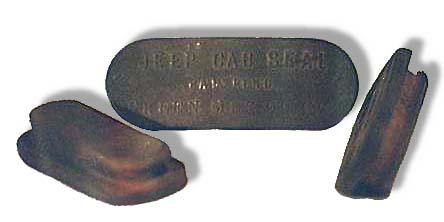
From the CJ-3B Page
Bob made a good point, that I hadn’t mentioned the drain holes in the tool boxes of CJ-2As, CJ-3As, and CJ-3Bs. The CJ-3B page highlights that hole, which is in the rear of the box.
Bill Norris notes that CJ-2As had small drain holes under the 1/2 cab footman loops in the rear floor pan. They also have them on either side of the windshield near the bottom of the pan in case the windshield was down. CJ-3A windshields also have drain holes on the bottom side near the end of each arm.
CJ-3As & CJ-V35/Us:
Thanks to Mike Wixom for sharing some of the extra drain strategies for the CJ-V35/Us, which were designed to tackle deep water. You can view some of MIke’s jeeps here.
According to him, the CJ3As & CJV35/Us had fuel tank drains on the bottom of the fuel tank that protruded through the tub. Most are plugged with a square pipe plug. The CJV35, had additional drains located in the rear floor behind the front seats for the battery boxes to drain through the tub.
The drains in the front of the floor on the CJ2a,3a etc were likely produced by a dimple die that in theory increases strength of the sheet metal and is visually appealing at that penetration point but had an unwanted affect of creating a dam to keep water and debris in.
My later CJ7 had holes in the floor in various places for drains but the floor still rusted out as they were not in the lowest points of the floor. Seems Jeeps should not be left in the rain or run through rivers…. I am sure the designers never dreamed that 70 plus years later there would still be so many of these things in existence.
M-38s, M-38A1s, CJ-5s and CJ-6s:
For the M-38, M-38A1, CJ-5s and CJ-6s (1955-1971) jeeps, a new drain dual-hole strategy was introduced. The drain holes had a cover on the floor that rotated.
Here’s an underside of an M-38 replacement body:
Here’s an example floor from an M-38A1 replacement floor from WillysMJeeps:
And a drain hole cover and gasket from Peter Debella:
And the bolt to secure it in place (at least on the M-38s):
If you know of any exceptions to these examples, please let me know!

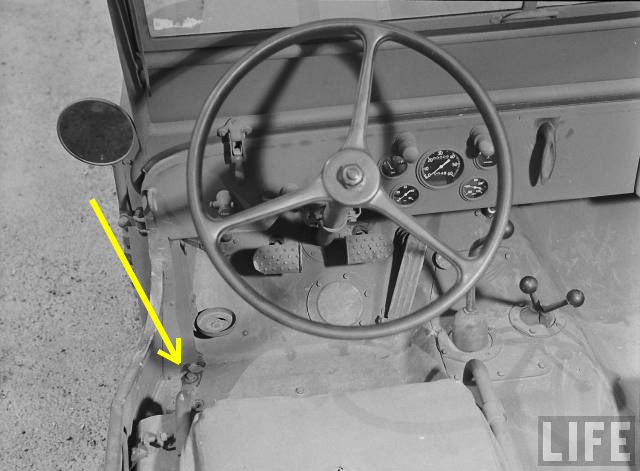
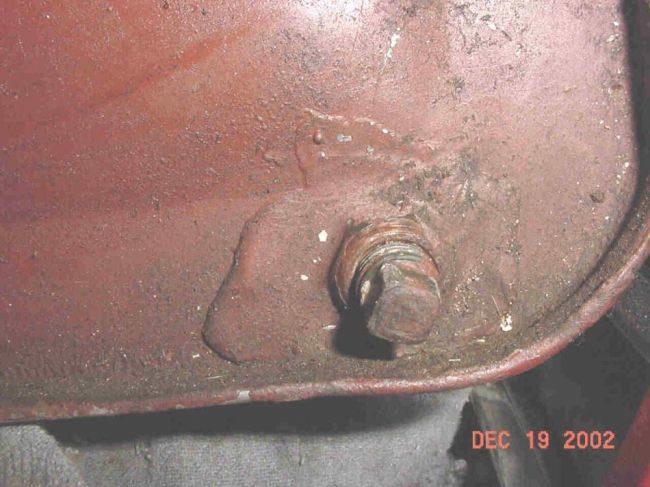
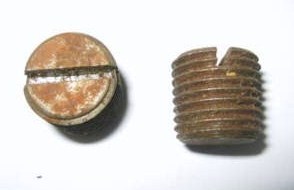
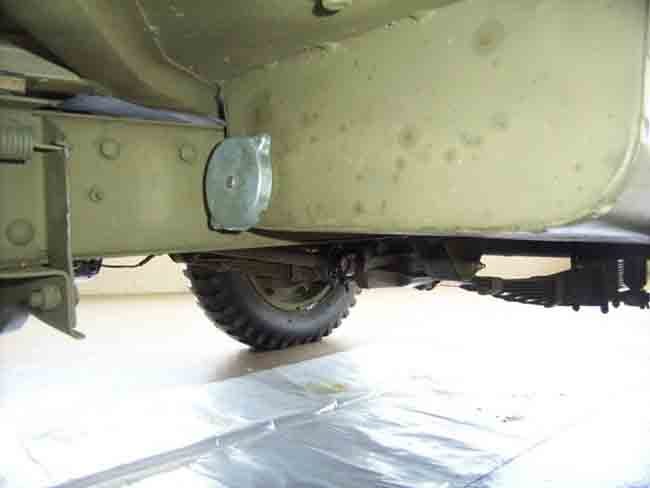
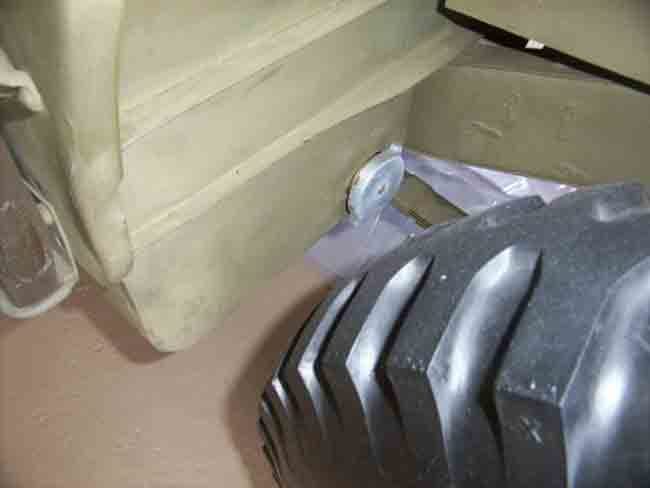
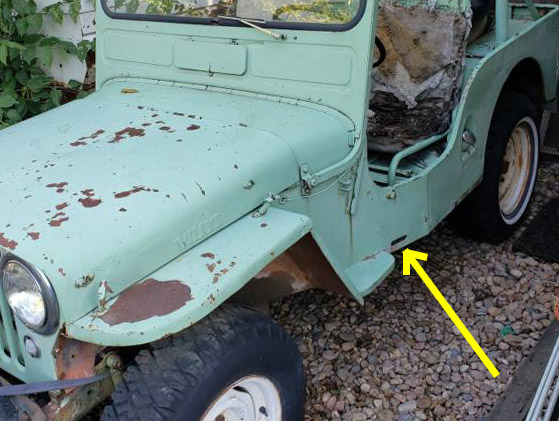
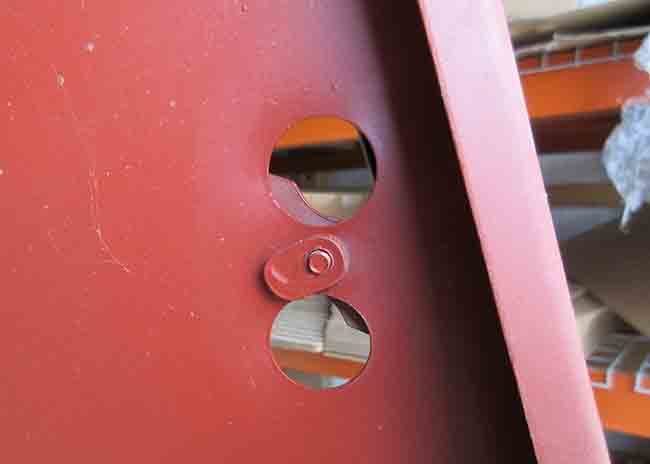
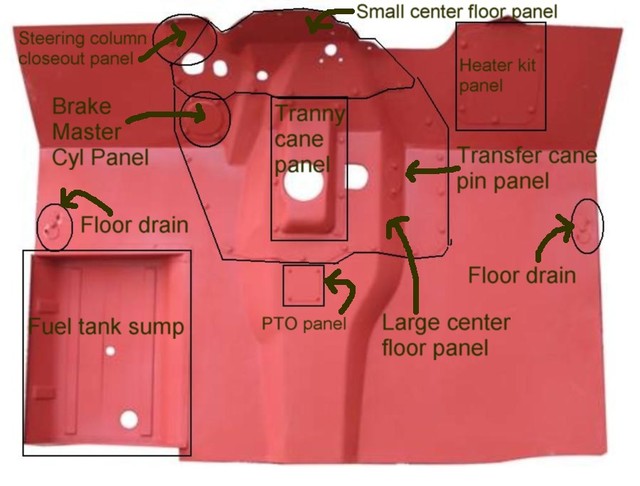
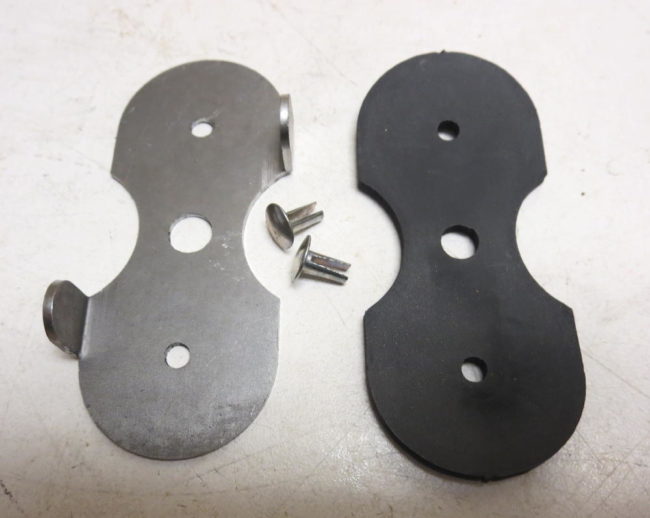
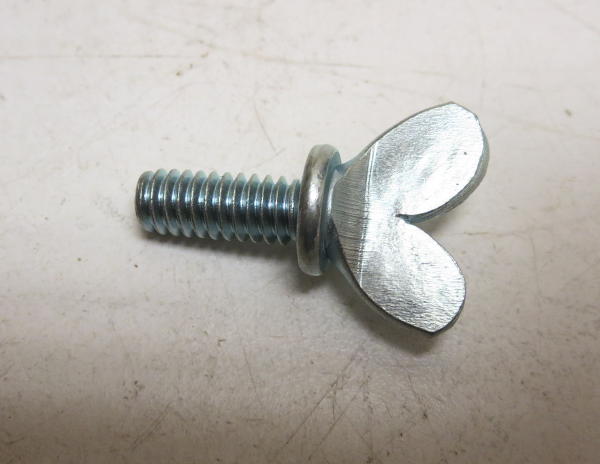
Don’t forget the small drain holes in the tool box.
Being old enough to remember, the drain holes on CJ2A’s & 3A’s were somewhat counter productive. Being side mounted near the floor, they had a curved lip surrounding the opening, a perfect catch basin for moist dirt. As a result, this was the first place to rust and rot through. By the time my dad bought our first Jeep a 1950 CJ3A in 1962, this area was already beyond repair. More trivia from my memory bank.
Who would if thought drain holes would be so interesting, but now I’m always looking for them – thanks Dave.
As for counterproductive; the CJ drain holes let water in when crossing creeks. Although I must say every old Jeep I ever owned had plenty of holes in the floor.
Just some barely related trivia: In food processing plants the idea was to keep electrical conduit systems sealed from water intrusion for equipment wash down. However that didn’t work, even if sealed well there was still the problem of condensation build up. Therefore we started drilling small drain holes in the lowest portion of the conduit system which let the water out and let the system breathe. Sure it let water in, but overall the system stayed drier.
FYI, I found some small drain holes, some plugged by dirt, some not, at the bend upward in the floor pan on my 62 DJ. My only bubble rust area was between the tub support at the entry inside the body around the bracket’s cut outs trapping condensation behind the brackets. I used compressed air to push JB WELD into the area between metals until it came out the other side, multiple times to insure all air gaps had been filled. The curing process heat, helps boil out any moisture trapped in there from the air, and bonds the two as one. Hopefully it will outlast me.
SteveK: That’s a good suggestion.
Chuck: “Air-Tight” isn’t always a great thing, as you point out.
Mike: I always wondered why there was a lip at the oval drain hole, which made getting out water much more difficult. Someone had to have said at that time, ‘well that’s a dumb idea’??
Bob: I’d forgotten about that drain hole. Good call. I’ve added it to the post.
The CJ3A/CJV35/U had fuel tank drains on the bottom of the fuel tank that protruded through the tub. Most are plugged with a square pipe plug. The CJV35, had additional drains located in the rear floor behind the front seats for the battery boxes to drain through the tub. The drains in the front of the floor on the CJ2a,3a etc were likely produced by a dimple die that in theory increases strength of the sheet metal and is visually appealing at that penetration point but had an unwanted affect of creating a dam to keep water and debris in. My later CJ7 had holes in the floor in various places for drains but the floor still rusted out as they were not in the lowest points of the floor. Seems Jeeps should not be left in the rain or run through rivers…. I am sure the designers never dreamed that 70 plus years later there would still be so many of these things in existence.
Great post. Thank you.
All this talk of Jeep drains has left me – well , drained I guess. But on the serious side Dave an excellent tutorial on the ins and out of floor drains in Jeep products, Well Done!
Dave,
CJ2As had small drain holes under the 1/2 cab footman loops in the rear floor pan. They also have them on either side of the windshield near the bottom of the pan in case the windshield was down.
Bill
Herm the overdrive guy sells reproduction rubber drain plugs for the cj2a 3a ect. If anyone is looking for some. I have a couple sets on my shelf but I have never used them. I leave mine open all the time.
Thanks all!
Marty: I ran across a blurb about this, but didn’t see anything on Herm’s website. I’ll add a note about that.
Bill: I didn’t think about the windshields nor the rear cargo areas. I’ll add that to the post. Good stuff!
Mike: I made the obviously incorrect assumption that the V-35s had the same drain strategies as the CJ-3A. I’ll add that to the post, too.
One of the best things about these Jeep’s is you can hose them out when dirty.